Keeping your lawn healthy can be a challenge when weeds sneak in, looking just like regular grass. Even with your best care and attention, some of these clever imposters find a way to thrive, and they often blend in so well, you won’t notice until it’s too late.
What makes it tricky is their grass-like appearance, which can fool even experienced gardeners. These weeds don’t just blend in; they compete with your grass for nutrients, water, and space.
When left unchecked, they spread fast and weaken your lawn’s overall health. Learning to identify them is your first step to staying ahead. This guide will help you recognize the most common culprits so you can manage or remove them quickly.
Here are 15 grass-like weeds that could be hiding in plain sight on your lawn.
#1 Crabgrass (Digitaria sanguinalis)
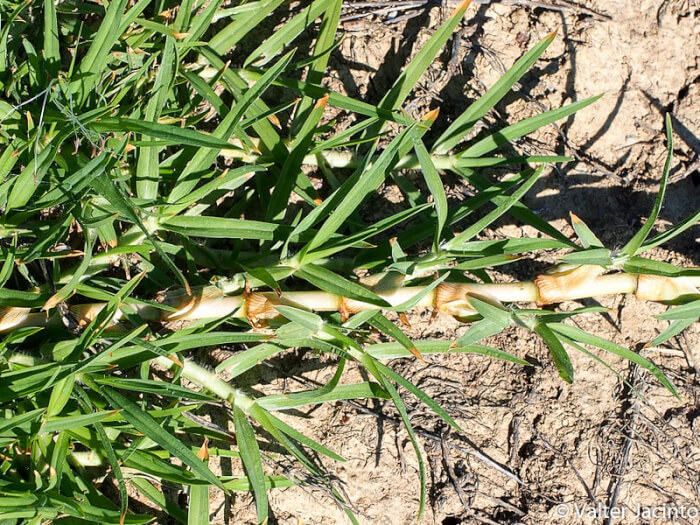 Source: Flickr
Source: Flickr
Crabgrass is a fast-growing weed that can take over large patches of your lawn in just a few weeks. Its wide, flat blades and bright green color make it look like turf grass at a glance.
But it tends to grow in low, spreading clumps that sprawl across the ground. If you’ve seen it, you know how quickly it gets out of hand.
For a surprising twist, you can learn about its benefits in 10+ Surprising Health Benefits of Crabgrass and How to Use It Effectively.
#2 Dandelion (Taraxacum)
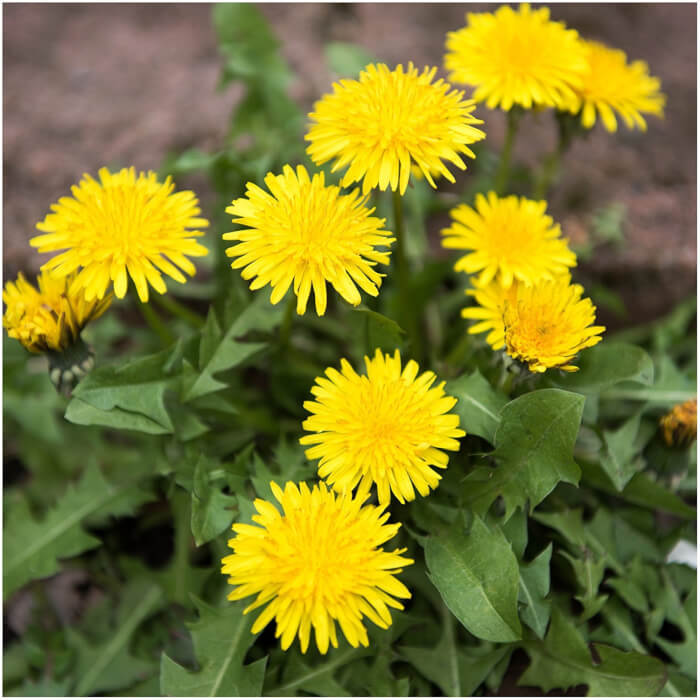 Source: Danielgalovan
Source: Danielgalovan
Dandelions might be known for their cheerful yellow flowers, but they start out looking like just another grassy plant. Their jagged leaves are low to the ground and can be mistaken for young turf.
Once they flower, those familiar puffballs scatter seeds everywhere. Their long taproots make them hard to pull completely. If you’re curious, try making Roasted Dandelion Tea: The Gut-Healing, Liver-Loving Brew You’re Missing.
#3 Path Rush/Slender rush (Juncus Tenuis)
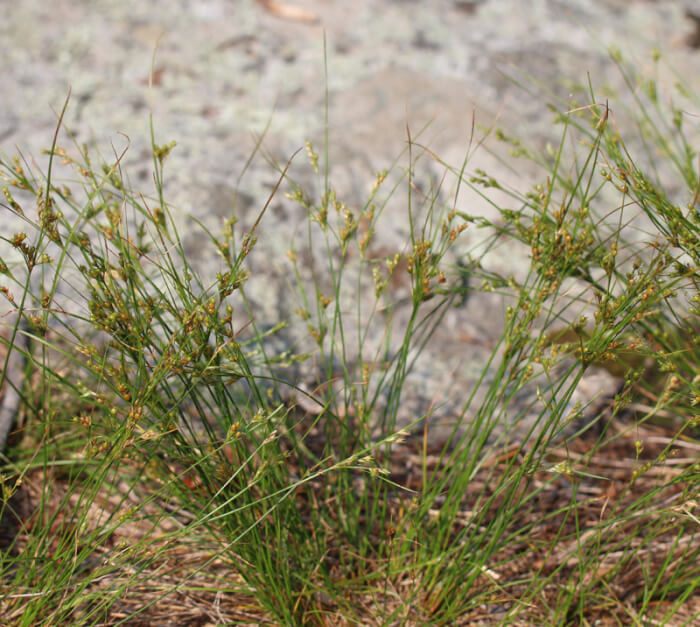 Source: Toadshade
Source: Toadshade
This sneaky weed grows straight up with slender, grass-like stems that can blend right into your lawn. It’s tough and thrives in compacted soils, often popping up along walkways or driveways.
It spreads through underground rhizomes, so pulling it once won’t solve the issue. Look for its shiny, round stems; it’s a key giveaway. Early digging is the best way to stop it before it spreads further.
#4 Blue Fescue (Festuca glauca)
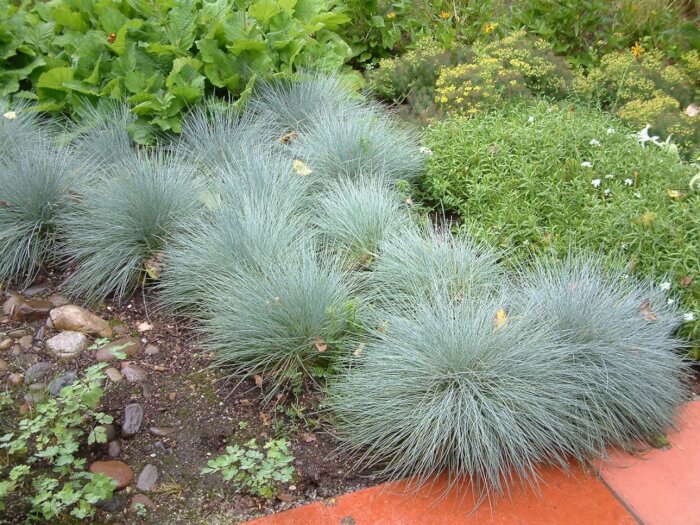 Source: Plantmaster
Source: Plantmaster
With its cool blue-green color, Blue Fescue might actually be used in ornamental landscaping, but when it invades your lawn, it turns into a problem. It forms tidy clumps that look like decorative grass, but it crowds out healthier turf.
The leaves are narrow and spiky, and it often blooms in spring with small green flowers. You’ll find it more often in cooler regions. Mowing alone won’t remove it, pull the clump from the base to control growth.
#5 Foxtail (Setaria sp.)
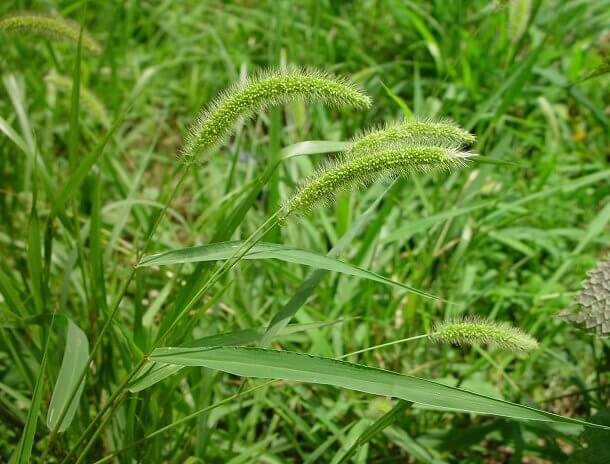 Source: Soilcropandmore
Source: Soilcropandmore
Foxtail earns its name from the bottle-brush seed heads it produces in summer, but before that, it looks a lot like any other bunchgrass. It grows in large, bushy clumps that can reach several feet wide.
Foxtail thrives in compacted or disturbed soil, especially in overwatered or neglected areas. The seed heads can stick to clothing and even harm pets. Regular mowing can help, but early detection is key to keeping it from spreading.
#6 Carpetgrass (Axonopus sp.)
 Source: Garden
Source: Garden
Carpetgrass grows thick and coarse, often covering large areas like a living mat. Its dull green color can seem like a tired lawn, but it’s actually a weed that thrives in acidic, wet, or shady areas.
It grows upright to about a foot and is difficult to eliminate once established. It’s often mistaken for part of your grass, especially when kept trimmed. Focus on improving drainage and balancing soil pH to make it less appealing to carpetgrass.
#7 Johnsongrass (Sorghum halepense)
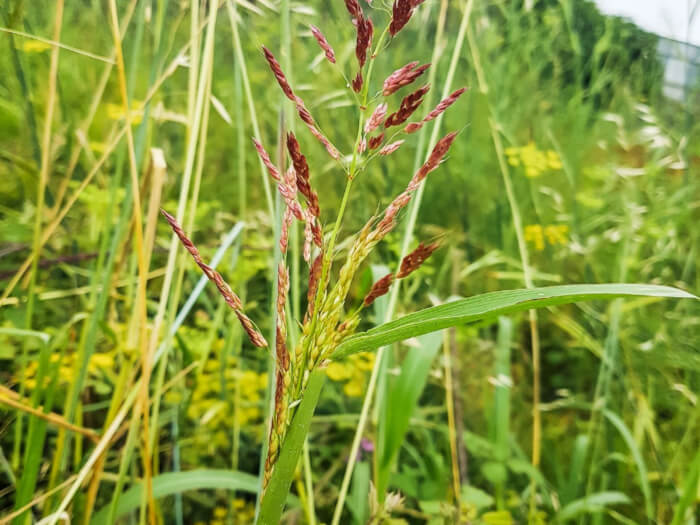 Source: Gardeningknowhow
Source: Gardeningknowhow
Johnsongrass grows tall, sometimes up to 7 feet, and spreads aggressively through underground rhizomes. Its bright green leaves have a clear white vein down the center, making it easier to identify up close.
It often shows up at the edge of lawns or near fences, and it doesn’t stay small for long. Cutting it can make it worse unless the roots are also removed. Try smothering areas with mulch if it pops up near garden beds.
#8 Smooth Bromegrass (Bromus Ramosus Ramosus)
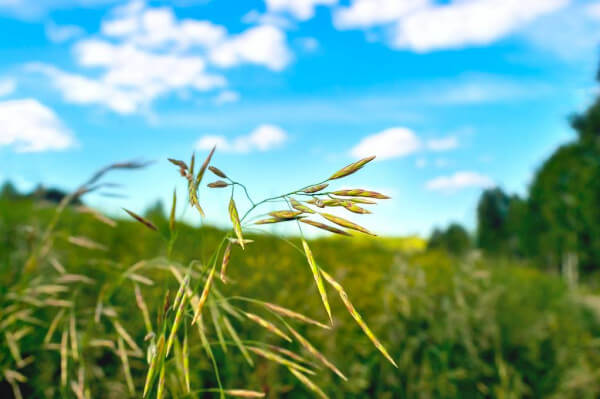 Source: Depositphotos
Source: Depositphotos
This weed may look soft and graceful, but it’s an aggressive invader. Smooth Bromegrass has fine, arching leaves that blend into turf and a strong rhizome system that makes it hard to get rid of.
It spreads fast in spring and early summer, often forming large, dense patches. Mowing doesn’t stop it, it only spreads more seed heads. For better control, apply a pre-emergent herbicide early in the season.
#9 Wild garlic (Allium ursinum)
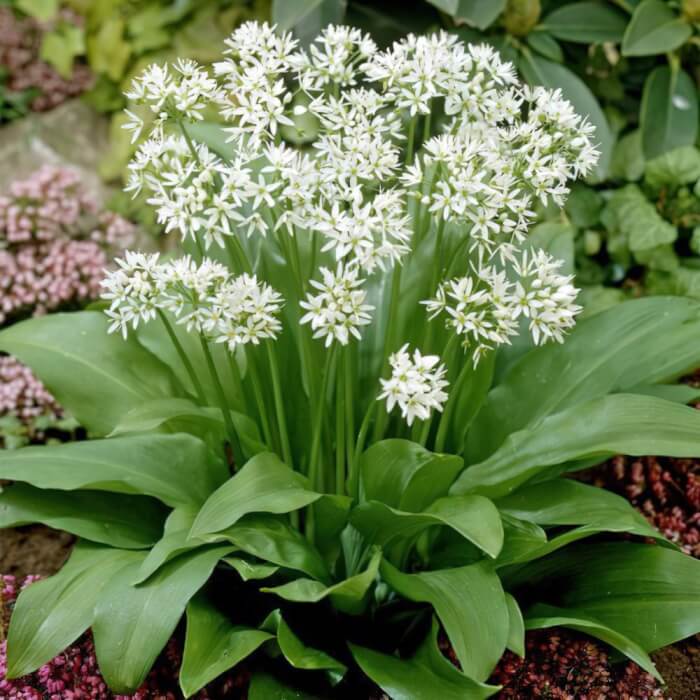 Source: Bostonbulbswholesale
Source: Bostonbulbswholesale
Wild garlic grows in clumps that resemble slender grass, but its distinct garlicky smell gives it away. Its leaves are thin and smooth, and it thrives in shady, moist areas. It can quickly spread via underground bulbs and is surprisingly hardy.
If you pull it, make sure to get the entire bulb, or it’ll return. Want to try something tasty? How Wild Garlic Pesto Can Boost Your Immunity and Detox Your Body Naturally has a delicious way to use your harvest.
#10 Goosegrass (Eleusine indica)
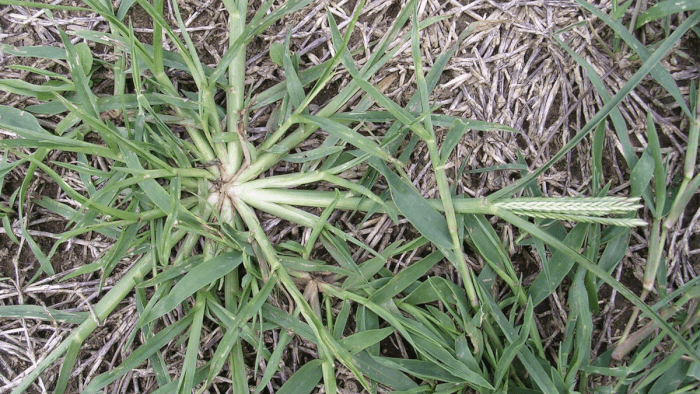 Source: Purdue
Source: Purdue
Goosegrass has a silvery-green color and flat, wide leaves that fan out like a goose’s foot. It loves compacted, poorly drained soil and thrives in hot, sunny spots. At first glance, it looks like crabgrass, but its finger-like tufts are more rigid.
It forms low, dense mats that resist mowing. If you’re curious, check out Discover How Goosegrass Can Improve Kidney Health and Detoxify Your Body Naturally for its lesser-known benefits.
#11 Quackgrass (Elymus repens)
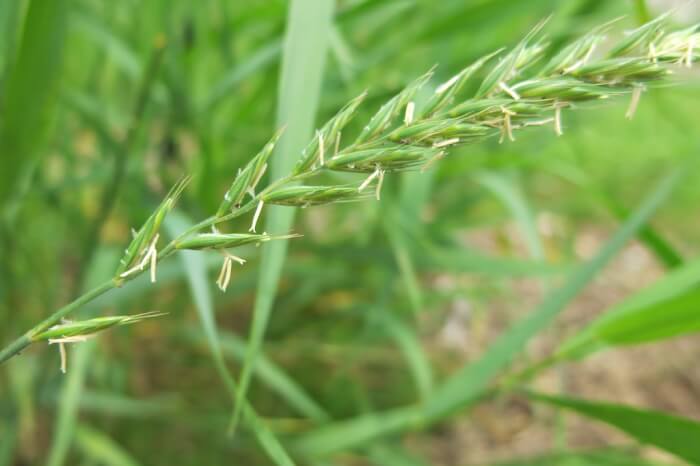 Source: Flickr
Source: Flickr
This fast-spreading weed has flat, rough leaves and underground stems that tangle with your grass roots. It forms clumps of bright green blades that can be mistaken for lawn grass.
It grows in sun or partial shade and can invade both lawns and garden beds. Quackgrass is best removed early before it becomes dense. Dig deeply to remove every piece of rhizome.
#12 Nutsedge (Cyperus sp.)
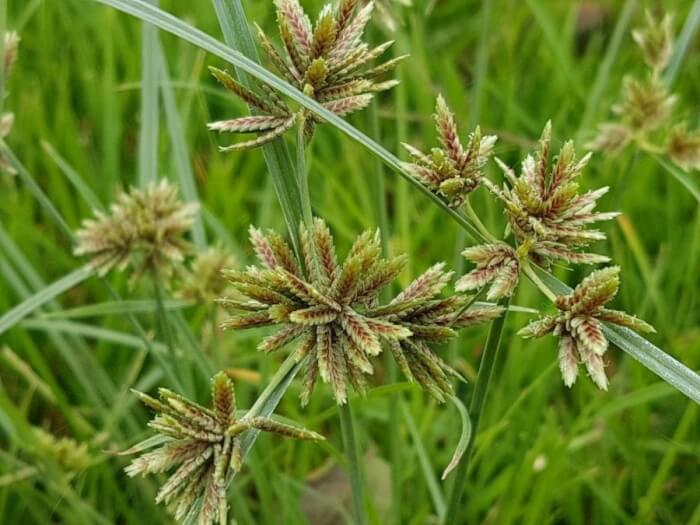 Source: Plantnet
Source: Plantnet
Nutsedge has bright green, waxy leaves that grow upright and in sets of three from the base. It loves wet areas and grows faster than most grass, so you’ll notice it sticking out after mowing.
During the summer, it produces yellowish flowers that mature to a purplish hue. Pulling it often leaves behind its tubers, so it’s best to use a targeted herbicide. Improving drainage in wet areas can also discourage it.
#13 Annual Bluegrass
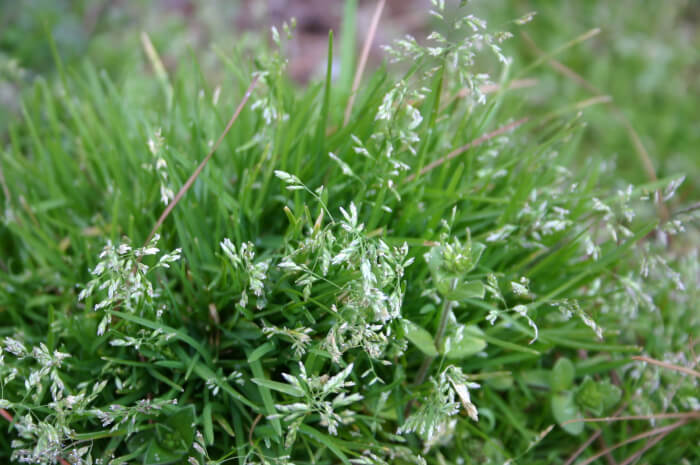 Source: Plantsoftheworldonline
Source: Plantsoftheworldonline
This weed is light green, with soft, fine blades that make it hard to distinguish from young turf. It’s especially common in cooler, moist conditions and grows in dense patches.
You’ll notice small white seed heads that appear even when the grass is short. It dies off in summer, leaving bare patches behind. Overseeding and soil aeration help crowd it out over time.
#14 Yellow Salsify (Tragopogon Dubius)
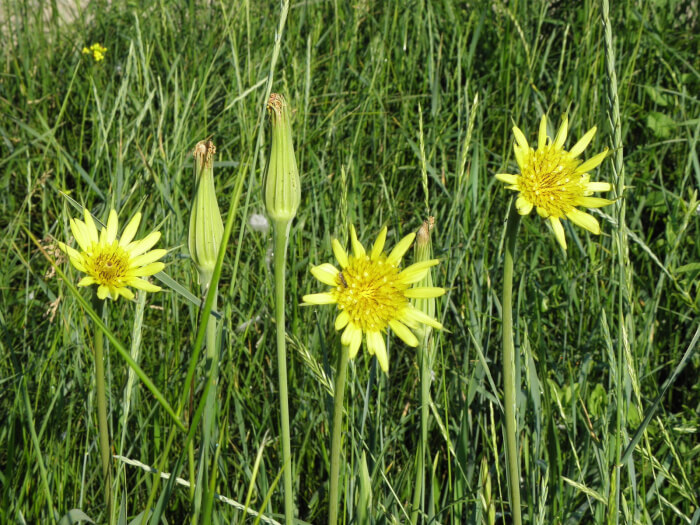 Source: Plantsoftheworldonline
Source: Plantsoftheworldonline
Yellow Salsify starts with grassy, narrow leaves before sprouting its standout yellow flowers. Its blooms resemble dandelions but are followed by large puffballs that spread seeds quickly.
You’ll usually spot it in dry, sunny areas. It’s best to remove before flowering, or it’ll return with a vengeance. Dig it out at the base to avoid reseeding.
#15 Creeping bentgrass (Agrostis palustris)
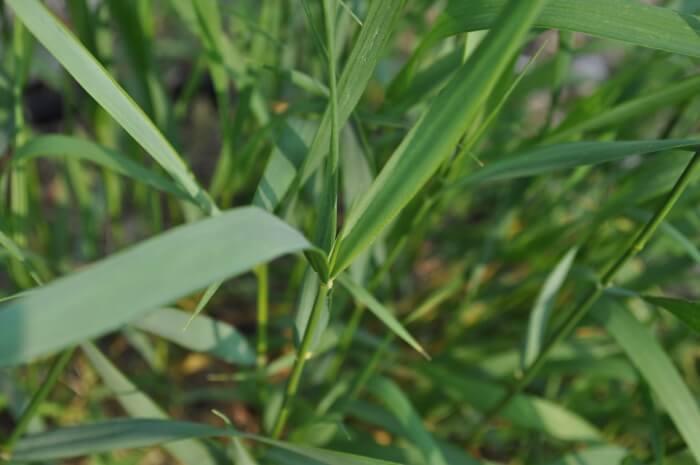 Source: Twitter
Source: Twitter
This grass-like weed forms thick, tangled mats that can feel spongy underfoot. It spreads rapidly through above-ground runners and thrives in cool, damp environments.
Although it’s sometimes used on golf courses, in home lawns it becomes invasive and uneven. During hot spells, it browns out and leaves behind unattractive patches. Rake and dethatch your lawn to discourage it from spreading.
